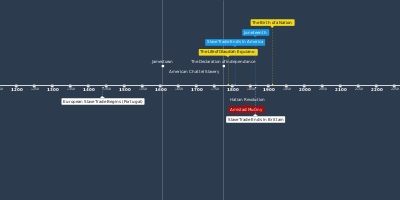1 Jan 1930 Jahr - Heyward Shepherd monument
Beschreibung:
The Heyward Shepherd monument was erected in 1931, after decades of controversy, by the United Daughters of the Confederacy (UDC) and to a lesser extent by the Sons of Confederate Veterans. It commemorates Heyward (sometimes spelled "Hayward" or "Heywood") Shepherd (1825–October 16, 1859), a free black man, who was the first person killed during John Brown's raid on Harpers Ferry. The monument was intended to document the Lost Cause allegation that there were happy, nonrebelious slaves (the UDC had a "Faithful Slave Memorial Committee"). There is no evidence that Shephard was born a slave; there is also no evidence that he was opposed to John Brown's attempt to end American slavery, or that he had even heard of it. Nevertheless, it was intended to be a reply to blacks' glorification of Brown, in whose honor Storer College had been established in Harpers Ferry; the College placed a plaque on the Armory in 1918. There was no better place, from the UDC's point of view, for a monument to the "happy slave" than Harpers Ferry.According to Caroline Janney,
[T]he Heyward Shepherd monument and the controversy that surrounded it serves as a rare instance in which white and black memories overtly confronted one another and one in which white "victory" was not guaranteed. Framed in terms of gender, race, and heroism, the debate reflected much larger ideas about slavery, race relations, and resistance to violence in the early twentieth century… By the mid-1930s, neither side seemed interested in the specifics of the raid, Shepherd's death, or even his status as a slave or freedman. Over the course of the debate, both whites and blacks had struggled with images of gender and heroism and eventually found themselves embroiled in a struggle over mythic symbols. Shepherd, for the UDC, and Brown, for the NAACP, became emblematic of larger social concerns: what the relationship between the two races should be in the wake of slavery and the role of violence in that relationship.
Zugefügt zum Band der Zeit:
Datum:
1 Jan 1930 Jahr
Jetzt
~ 95 years ago
